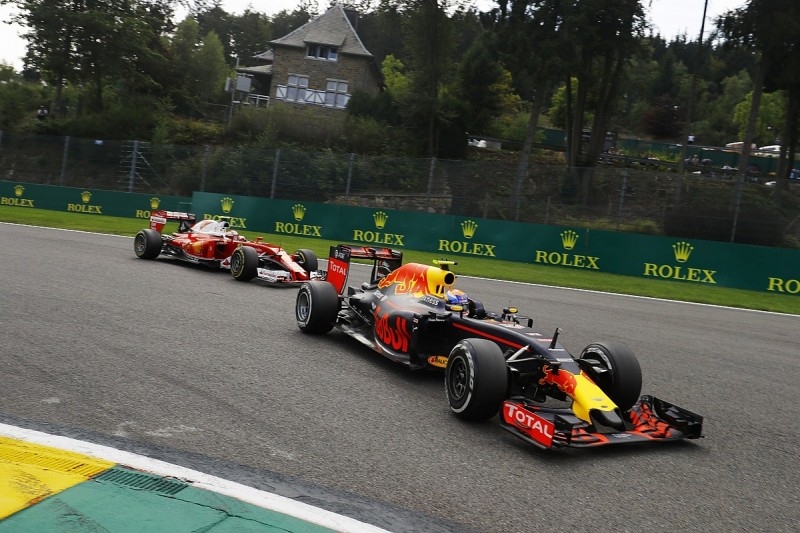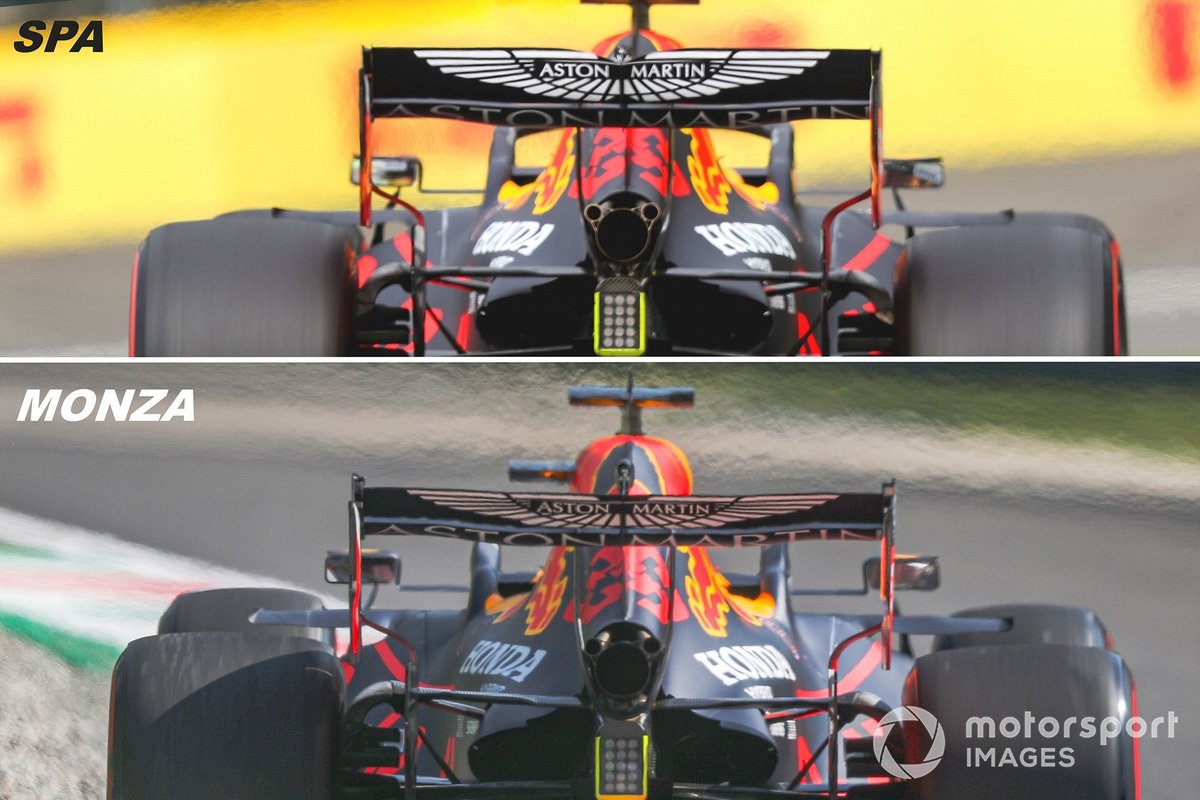Top 10 Strangest Rules in Formula 1 of All Times That You Might Not Know Exist
 |
| Top 10 Strangest Rules in Formula 1 of All Times That You Might Not Know Exist |
Formula 1 is one of the most technologically-advanced motorsports there is if not one of the most technologically advanced pastimes humans have ever had. A tremendous amount of research and development goes into every little aspect of the car.
As a result, Formula cars are fast – very fast. They can slam your body around with four times the force you’ve ever experienced in a passenger car, and have exceptional performance characteristics. Driving one error-free enough to keep it off the wall is already hard enough. Just watch the onboard camera as it captures the action; watch how fast those hairpins whiz by, one after the other, after the other!
Reaction time really does need to be on point, but keeping your racecar in one piece is only half the battle. You’re racing against the clock, the grid, and the rules. Yes, the rules. They are the necessary evil that keeps you alive to race another day.
Nobody likes rules, not ever; let’s face it. But the rules keep the sport alive in a sustainable way and really are for your best interest. But, with cars getting exponentially faster, the rules are always evolving and changing – it’s your job to stay on top of them all!
The pattern goes like this: FIA makes a rule to promote safety, increase engagement, promote fair competition – whatever have you. If the rules end up falling short, they’re axed, usually replaced by even more constricting rules to cramp your style. Many exploratory rules end up having the exact opposite effect that they were intended to have.
The more you know, the better off you are. Michael Schumacher, for example, knew enough to exploit a loophole in a penalty regulation, allowing him to take the lead, and still serve his penalty – on the last lap…winning the race, controversially, from pit lane! Indeed, knowledge is power, my friends! Soak it up!
Top 10 Strangest Rules in Formula 1 of All Times
1. Dropped scores
2. Post race traditions
3. Wing Adjustments
4. Aggregate qualifying
5. Double points for one race only
6. Two liveries, one team?
7. Point for fastest lap
8. No tyre changes causing a six-car grid
9. Elimination qualifying
10. Refuelling leaves safety in the balance
*******
1. Dropped scores
 |
| Photo: autosport |
For the first 40 years of Formula 1, the sport used dropped scores meaning the worst results from a driver would not count towards the final standings.
The last time it was used was in 1990 when drivers would use their best 11 races out of the 16 events. That year, Ayrton Senna scored points on 11 occasions but Alain Prost took points at 12 events.
Due to the dropped points rule, Prost lost two points because he had to drop his worst points finish - fifth place at the Canadian Grand Prix.
Two years earlier, Prost lost three second places whilst Senna only lost a fourth and a sixth. Senna won the championship by three points.
The best 11 results rule was in place from 1980 for the drivers’ championship, although did not affect the constructors’ standings in which all points were counted from 1978 onwards.
From 1967 to 1980, the season was split into two blocks of races with drivers and, until the final two years of this span, constructors were allowed to drop one points score in each half.
In 1950 until 1966, the world championship season wasn’t split, with simply the best four, five or six scores counted depending on the number of races.
Imagine a scoring system like this nowadays.
2. Post-race traditions
Post-race traditions. Something that should be simple right? You win a race you stand on the podium, you spray champagne, and you sing the national anthem. Easy? Wrong!
At each race there must be a master of ceremonies, who from my understanding is the person who does the post race interviews and he is responsible for all of the following rules. The cool down room which isn’t mandatory, MUST be be suitably ventilated or have air conditioning if the temperature is above 25°C. I mean F1 racing is hard work so a cool environment is the least they can do. Water with no branding must be provided. Three bottles must be at parc ferme, with three additional bottles in the ‘cool down room’ – no other drinks are allowed in these areas. Speaking of drinks champagne must be available on each drivers’ podium position.
Even the anthems have regulations. National anthems need to be played via a “suitable sound system”. So I don’t think I’ll be bringing my Amazon Elexa to the British Grand Prix.
3. Wing Adjustments
 |
| Photo: giorgiopiola |
The barge boards and rear wing are getting a few changes and a new look for the 2019 racing season, all of them intended at making the air behind the racecar more follow-friendly. This is rooted in the desire to keep racing exciting. The re-positioning of the barge boars will help normalize airflow from the front wing, while the increasing size of the rear wing will work to open a bigger slice of air up for cars behind the leader.
Formula 1 cars aren’t as good at running freight trains as NASCAR is, but whatever FIA has to do to keep it fresh, count on them to bend up and tear down the design of the racecar we know and love every few years.
4. Aggregate qualifying
A classic example of bad F1 rule-making: an excessively elaborate approach which failed to solve a fairly simple problem.
During the 2000s Formula One seemed to change its qualifying rules once per season at least. Aggregate qualifying was the surely nadir of the various schemes that were devised.
It involved running two qualifying sessions where each driver did a single lap, the first with no fuel restriction and the second using the fuel load they would start the race with. These times were then added together to produce the grid.
If ever a rule looked like an answer to a question no-one asked, it was this. As well as being needlessly complicated, the fact that the second session was held on Sunday morning deprived the sport of the media value of deciding the grid on Saturday.
The only positive thing to be said about this episode was that the powers-that-be realised how bad an idea it was fairly quickly. It was used for just six races in 2005 before being dropped.
5. Double points for one race only
Lewis Hamilton is no stranger to competing for the title during the last race of the season.
Last year he was on the losing side as Max Verstappen controversially took home top honors in the finale, but it’s also gone the other way too with Hamilton claiming the 2008 title from Felipe Massa in more jaw-dropping last-lap drama.
But sometimes entertainment has to be manufactured, and that was the case during Mercedes’ early years of dominance nearly a decade ago.
Back in 2014, F1’s desperation to have the season go down to the wire meant they announced a double points system for the final race of the year, upping maximum rewards from 25 to 50 points for one race only.
However, the irony was Hamilton’s rivalry with teammate Nico Rosberg meant the fight for glory would have been all to play for in Abu Dhabi without it anyway, with just 17 points separating the two teammates showing there was no need.
Nonetheless, Rosberg’s technical failure helped Hamilton seal the title and, for one race and one race only, score a record 50 championship points in one weekend.
6. Two liveries, one team?
 |
| Photo: formulaspy |
In 1999, BAR ran a dual livery after a disagreement with the FIA. The team unveiled two completely different liveries on their two cars during the BAR launch to promote their two main brands.
Jacques Villeneuve's car was a white livery with red highlights to promote the Lucky Strike brand whilst Ricardo Zonta's was a dark blue livery to promote State Express 555.
This is not allowed in F1 as rules state that cars from the same team must run the same livery. A bizarre regulation that remains today which is why you will never see two cars from the same team running different colours.
After a discussion between BAR and the FIA, the team opted to run a dual livery which featured both brands. One half of the car was dark blue, the other half was white with red highlights. Both cars ran these colours.
7. Point for fastest lap
In the first years of the championship the driver who set the fastest lap at each race got a bonus point. The plan was dropped in 1958 and ever since drivers have only scored points based on where they finish in the race.
The simplicity of that approach is something F1 would do well to preserve. There were discussions last year about reviving the practice, but giving the bonus point to the pole sitter instead.
F1 should be very wary of tinkering with the points system in this way without thinking carefully about exactly what incentive it is giving to competitors. It doesn’t take a great leap of imagination to see what farcical scenarios could unfold if rules like this were implemented.
For example if a driver needed only one point to win the championship and could do so by setting fastest lap in the race, they would be better off treating the race as a qualifying session, only leaving the pits for a few laps on soft tyres. Series which do give points for fastest lap, such as GP2, attempt to prevent that from happening with ever more complicated rules governing how a driver is eligible for the bonus point. All of which is needless complication for no real benefit.
As for granting a point for pole position, viewing figures for races would certainly not improve if millions tuned in one day to discover the championship had already been won 24 hours earlier thanks to the pole sitter taking a bonus point during qualifying. Besides which, starting the race ahead of everyone else is enough reward in itself.
8. No tyre changes causing a six-car grid
Michael Schumacher and Ferrari’s stranglehold on the drivers and constructors championships between 2000-2004 led to this one.
The FIA pinpointed Ferrari’s dominance to their partnership with tyre supplier Bridgestone and so restricted drivers to a single set of tyres for qualifying and the race.
This opened the door for McLaren, Renault, Williams and Toyota – who had all been using Michelin, which lacked Bridgestone’s pace but was far more durable.
In 2005, tyre changes were only allowed if there was a puncture or if it started to rain and Ferrari’s only win that term came at the US Grand Prix.
And that’s because the Indianapolis circuit only went ahead with just six cars after seven out of 10 teams refused to race for their own safety as the Michelin’s suffered some terrifying blow-outs.
Schumacher and teammate Rubens Barrichello were joined by backmarkers Jordan and Minardi on the grid as the only other Bridgestone runners, and fans were rightly furious.
Many began walking out as the race got underway, with the eventual race winner, Schumacher, saying he smelt of beer that had been thrown on track but outraged attendees.
9. Elimination qualifying
 |
| Photo: deurloo |
Currently, five cars are eliminated during each segment of qualifying before the final ten drivers battle it out for pole position.
This has been the case since 2006 and is a format that the drivers, teams and fans are on board with. But in 2016, the FIA decided to make a change to qualifying by eliminating the slowest car after seven minutes.
This process of knocking out the driver that is at the bottom of the leaderboard carried on throughout the session, with the slowest driver eliminated every 90 seconds until the qualifying segment ended.
In Q2 and Q3, the same format applied - whoever is slowest gets eliminated until one car remains.
It was a confusing concept and loathed by the fans. The format lasted for just two races at the 2016 Australian and Bahrain Grand Prix before the FIA reverted back to the current system.
10. Refuelling leaves safety in the balance
The modern F1 is a complete role reversal from Schumacher’s Ferrari days with regular tyre changes replacing refuelling – which was finally outlawed for the last time in 2009.
Consistent fuel spillage had led to several cars going up in flames, none more than Jos Verstappen’s Benetton erupting at the 1994 German Grand Prix.
But Hamilton was among the drivers to recently call for refuelling to be reintroduced to fix the weight issues in the current cards.
He said: “It puts a lot of pressure on Pirelli, to continue to deliver us performance, but also safe tyres.
“Usually in our discussions we’re just always asking…safety is so, so important and we’re seeing more and more of these incidents.
“We’ve got to make sure we work towards not having those in future.
“If that means like next year maybe going back to refuelling, so the cars are lighter or something like that, so we don’t put so much pressure on these tyres for safety, that could be a good thing.”
 Top 10 Best and Most Beautiful Female Country Singers Top 10 Best and Most Beautiful Female Country Singers Country music is an American musical style that incorporates elements of folk, bluegrass, blues, and rural dance music. Keep on reading to know more about ... |
 Top 10 Most Beautiful African Women in The World Today Top 10 Most Beautiful African Women in The World Today Africa is a continent of many, many countries and cultures. The following is a list of African women who are breaking barriers and shattering stereotypes ... |
 Top 10 Most Handsome Formula 1 Drivers In History Top 10 Most Handsome Formula 1 Drivers In History Let's check out top 10 hottest and most handsome Formula 1 drivers in history in the article below. |























